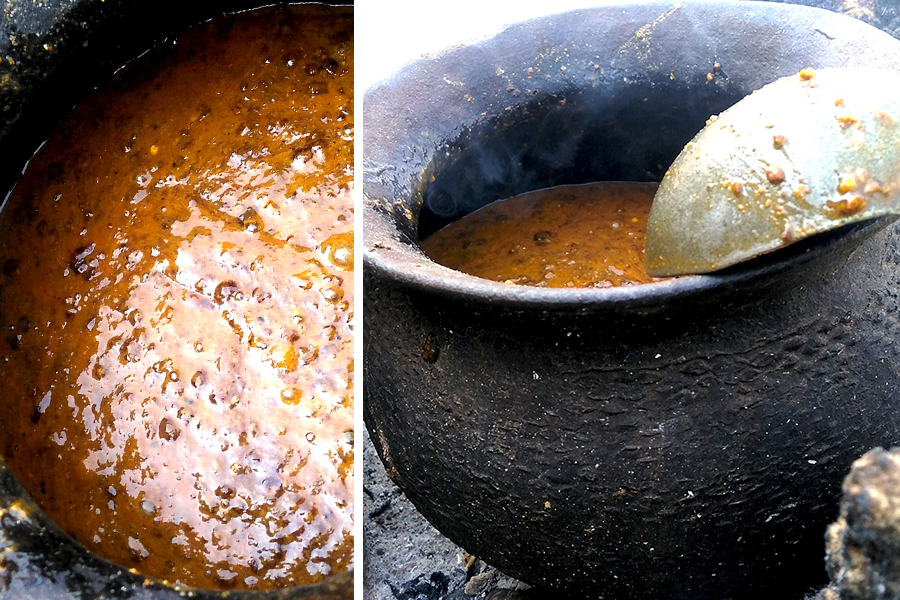
Genger Delicacy, Its Healthy Benefits And How To Prepare It
Have you ever had something so delicious to eat that you want to eat it again a trillion times?! Anna Thomas once said “we all eat, and it would be a sad waste of opportunity to eat badly.”
There is a special native Tiv delicacy called “genger” and it is a soup that is derived from a tree called ‘kon u genger’ in Tiv language. It is known by its botanical name as Bombax costatum from the family of Bombacaceaeand its common names are: ‘red-flowered silk cotton tree, red kapok tree or silk-cotton tree.’ It is a deciduous tree that grows usually reaching a height of 5 – 15 m. Its flowers sprout and blossom during the dry season. The sprouted flowers are usually red in colour and are attached to a fresh green flower spine or flower butt, the flower butt becomes dark when dry. The tree also has a thick thorny tree trunk which makes climbing it an impossibility. Bombax costatum is a multipurpose tree as it proves to be effective in the production of food, fibres, oil, timber, medicine and much more. However, bombax costatum, ‘kon u genger’ would be discussed as a delicacy only with its method of preparation duly explained.
As earlier noted, genger is derived from a tree called kon u genger during the dry season in December; when the red flower petals fall off from the deciduous tree after its ripening, people hang around the tree and pick up the fallen petals since the tree cannot be climbed. When the red fallen petals are picked, then the separation process begins and this is the most important procedure since the flowers are completely neglected and thrown away. The green ‘flower butt’ (if fresh), or the dark flower butt (if dry) is pulled out from the flower and the flower is discarded while the flower butts are made to sit on a long stick or is collected and put in whatever material that is brought for that purpose. It could be: a bowl, a bucket, a polythene bag or whatsoever.
Subsequently, the collated flower butts are dried under the sun so as to become crispy and at this point, the flower butts changes its colour under the sun’s scorching rays to dark. When it is completely crispy, it is then pounded into a powdery form; it is the powder that is then prepared as genger.
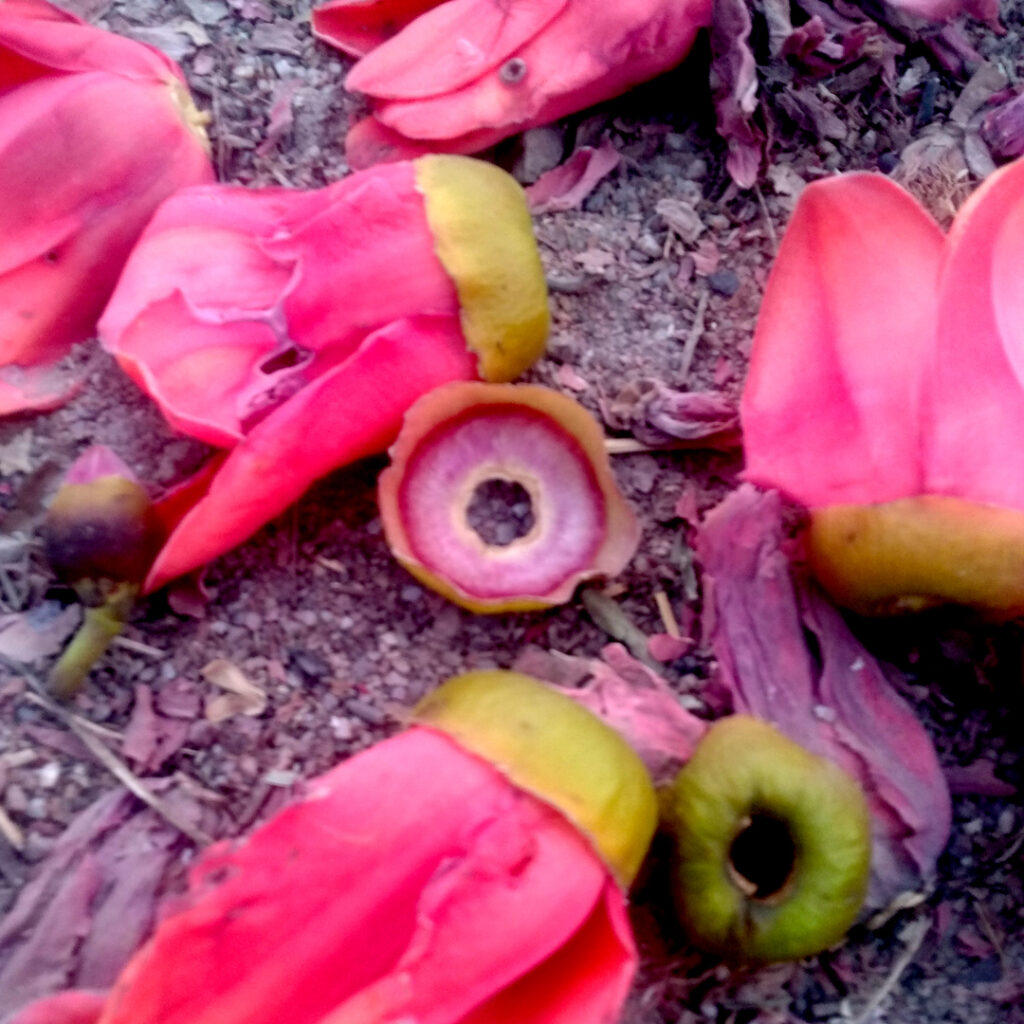
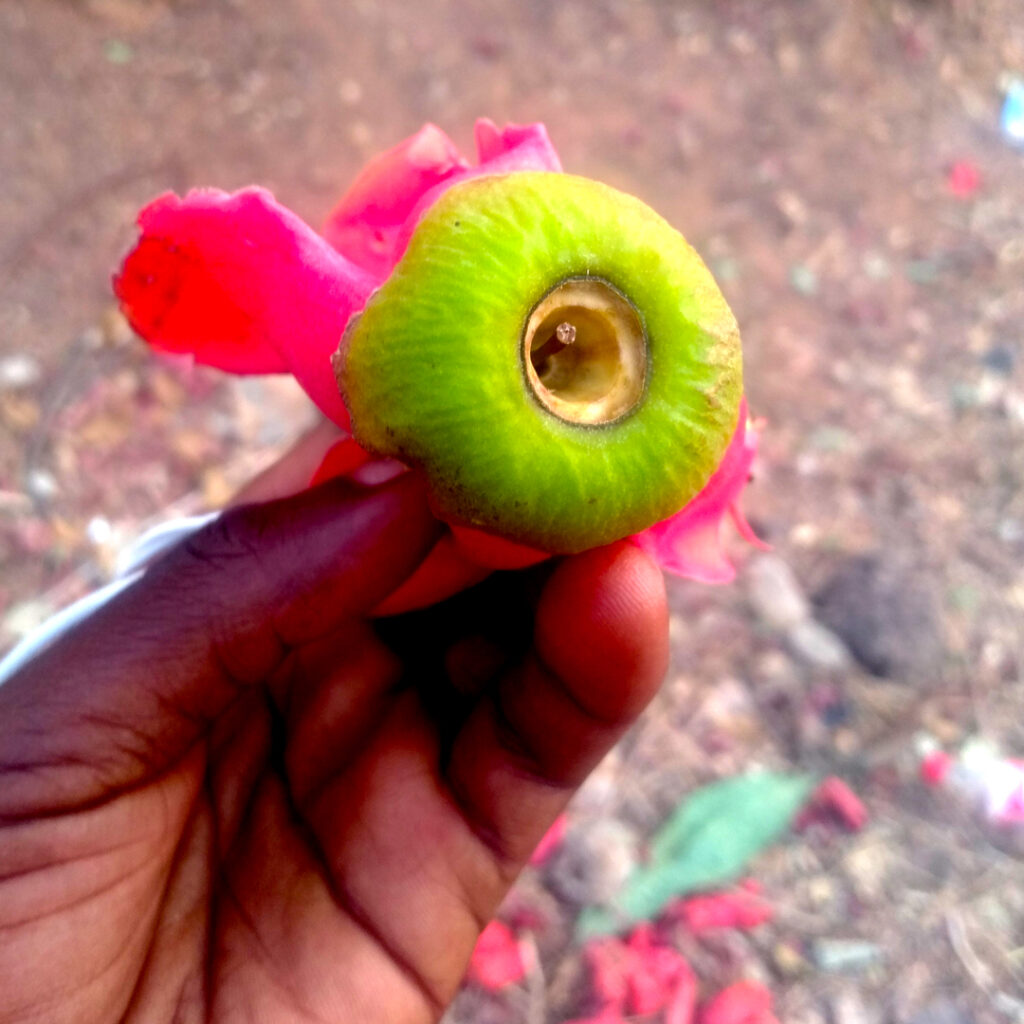
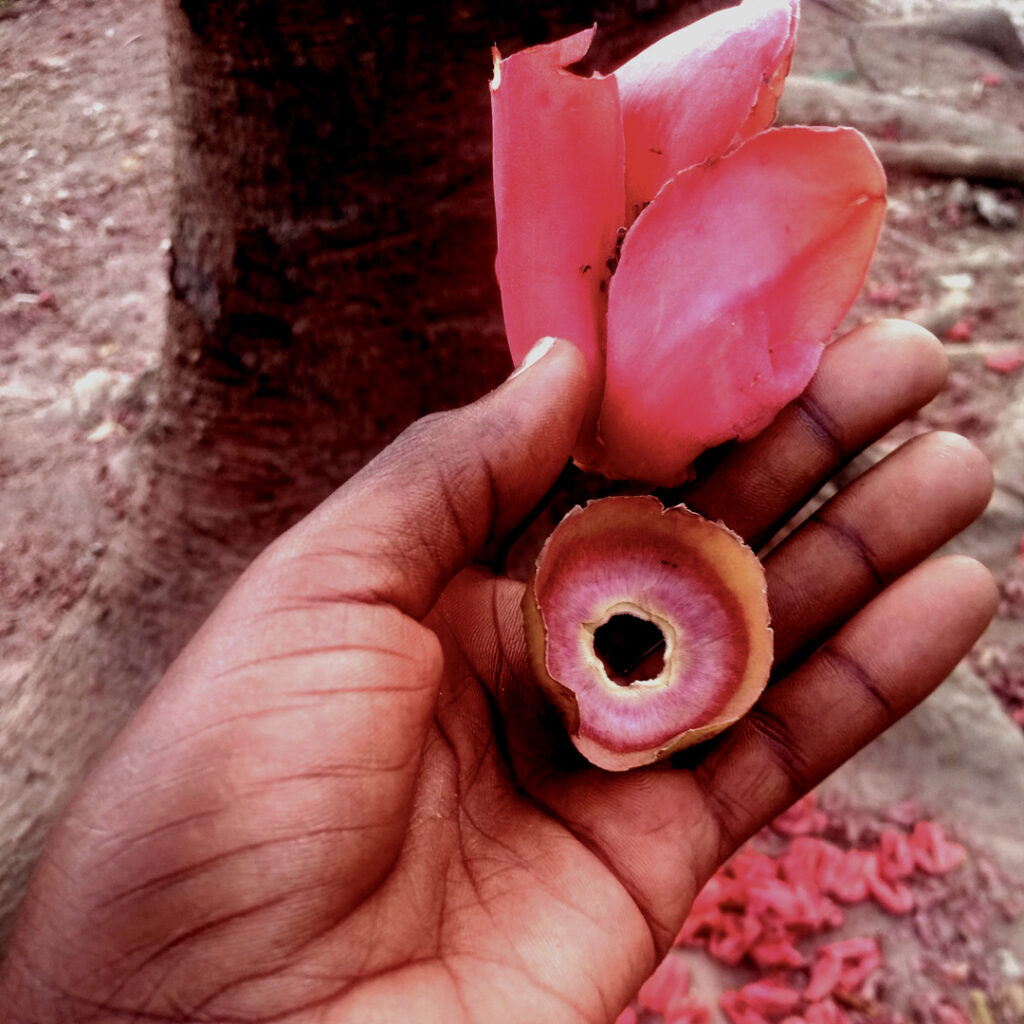
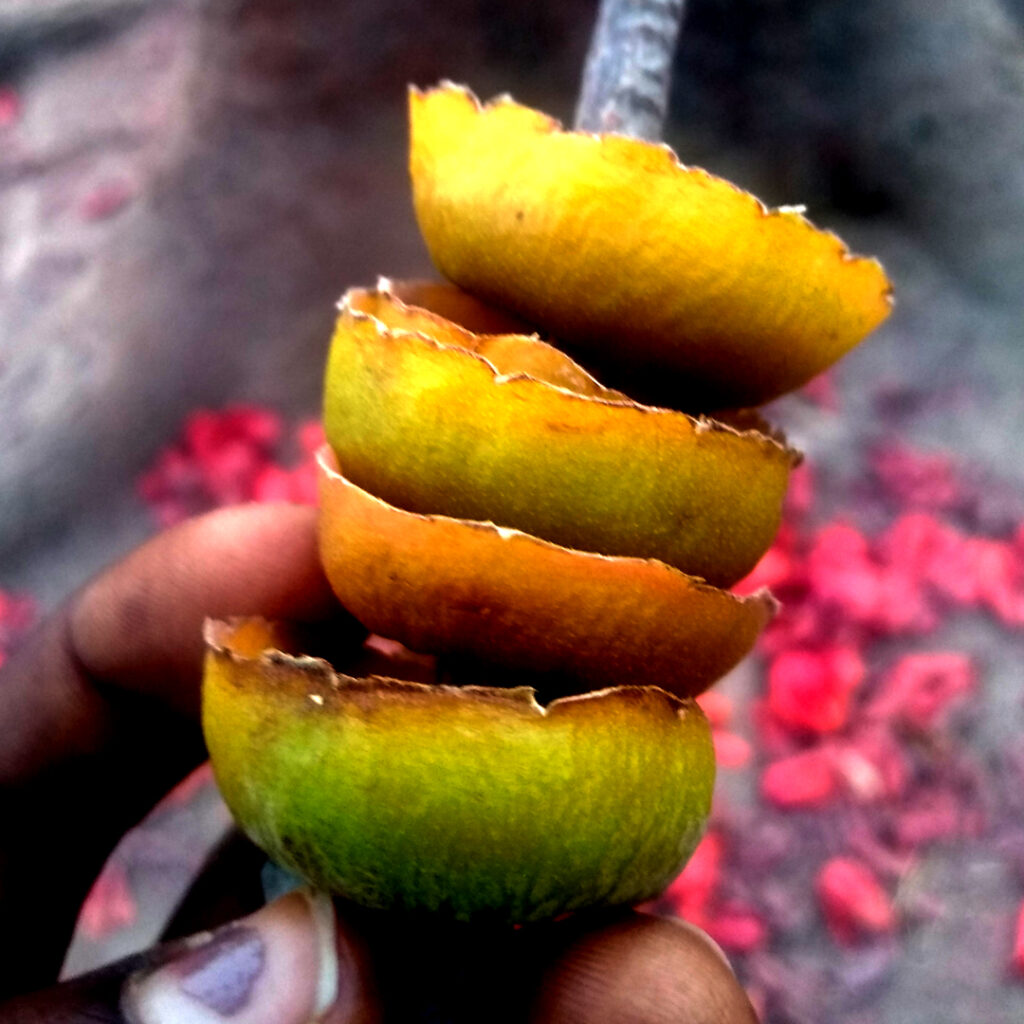
HEALTH BENEFITS OF KON U GENGER (BOMBAX COSTATUM)
Research reveals that bombax costatum has several health benefits. These health benefits manifest after consumption of the leaves, flowers or fruits of the tree which are edible, they contain a good amount of nutritive value and are used in Africa as nutritive vegetables/soup. These health benefits are listed herein below.
- The leaves of bombax costatum has been found to be a great source of antioxidants and polyphenols. It also contains elements that are relevant to human health which include: selenium, zinc, iron and magnesium; all which play vital roles in human metabolism.
- Iron and zinc have been found in high concentrations in its flowers. This suggests that this could be an interesting source of iron for humans in case of haemoglobin deficiency
- Its human consumption is affirmed by its high protein content, low toxic substances and the quantity of polyunsaturated fats in its seed oil.
- The tree bark possesses a soft as well as soothing effect especially on the skin, also used for wound healing. The bark is thick and gluey; the bark paste is ideal for skin rashes and causes nausea when consumed.
- It flower and its flower butt contain flavonoids and phenolics and these are compounds with various biological activities such as; immunomodulatory, antidiabetic, antioxidant, Nune status.
- The flowers and roots have tonic, diuretic, laxative and restorative properties
- The dried fruits and its flowers (genger) have been found through studies to contain protein and phosphorous that have been shown to be favourable to human health when compared to vegetables such as turnips, pumpkin, cabbage, radishes and carrots. It is also used in the measurement of disease and ulceration; such as of kidneys, bladder, chronic inflammation and that includes type of dysuria and stranguria– however, it is not yet scientifically known, the reasoning for its usage.
INGREDIENTS FOR PREPARING GENGER
The various ingredients that are combined to make up the delicious genger soup are mostly traditional ingredients and they are listed in the box below.
| Native Name | Botanical Name | Common Name(s) |
| Nune | Parkia biglobosa | Locust beans |
| Gbaaye | Prosopis Africana | African mesquite or iron tree |
| Yiye | Piper guineense | Ashanti pepper |
| Kyoho | Tetrapleura Tetraptera | Aridan fruit |
| Mkem (preferrably dried) | Capsicum frutescens | Piri-piri, African bird’s eye pepper or African red devil pepper. |
| Genger powder | Bombax costatum | Red-flowered silk cotton tree or red kapok |
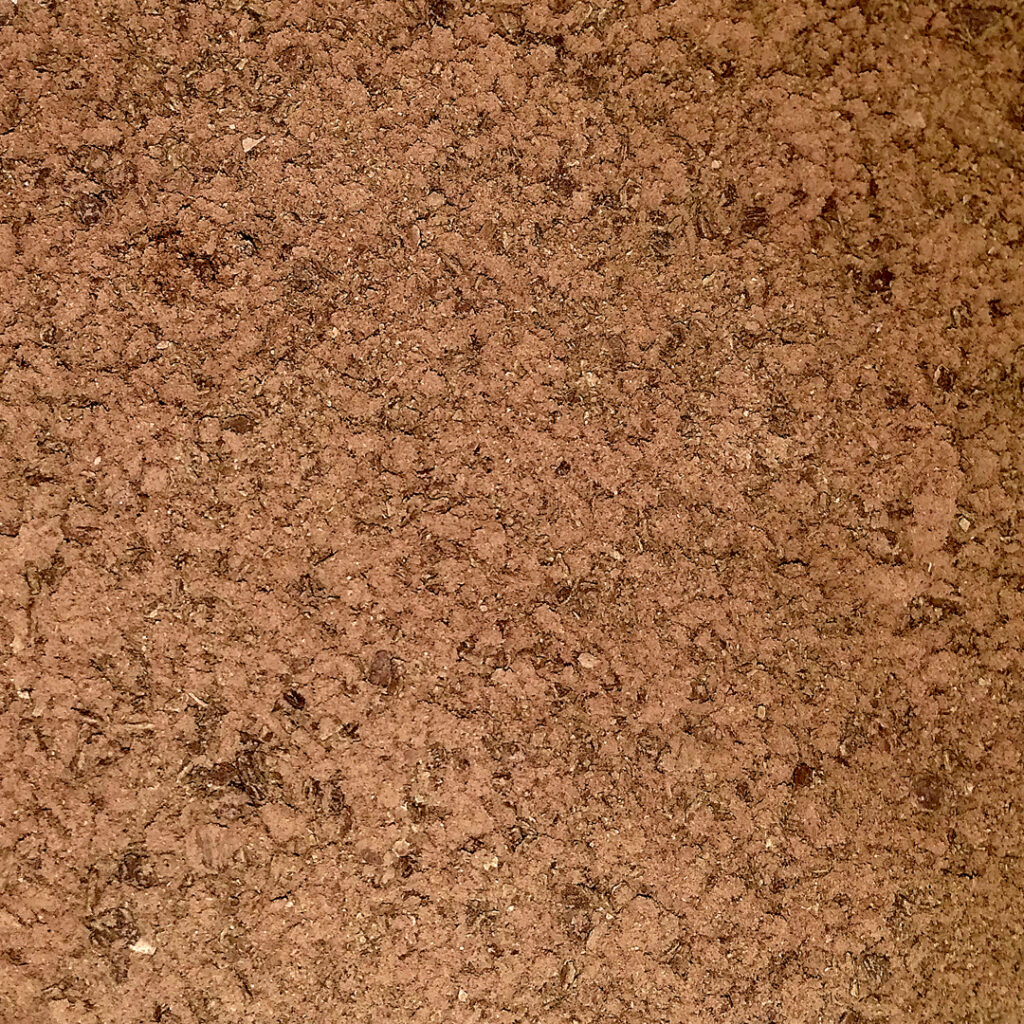
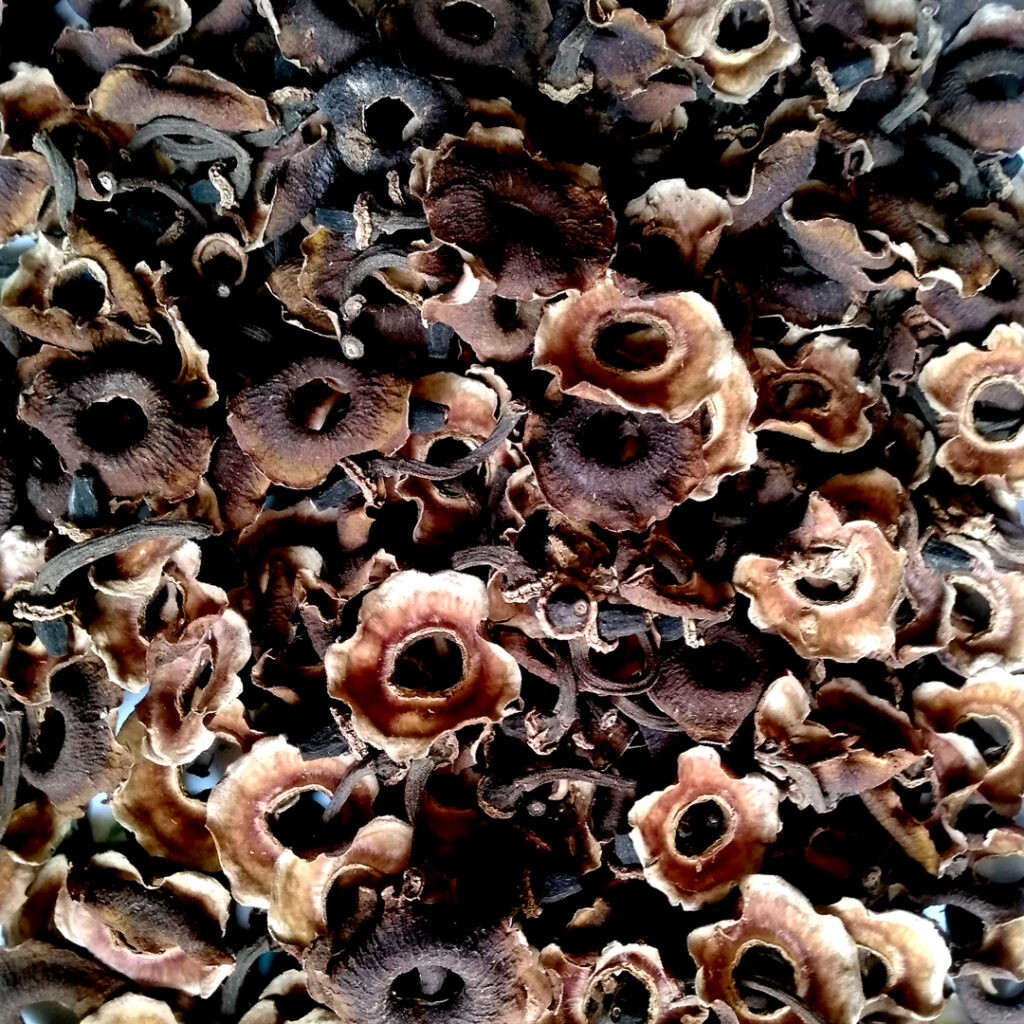
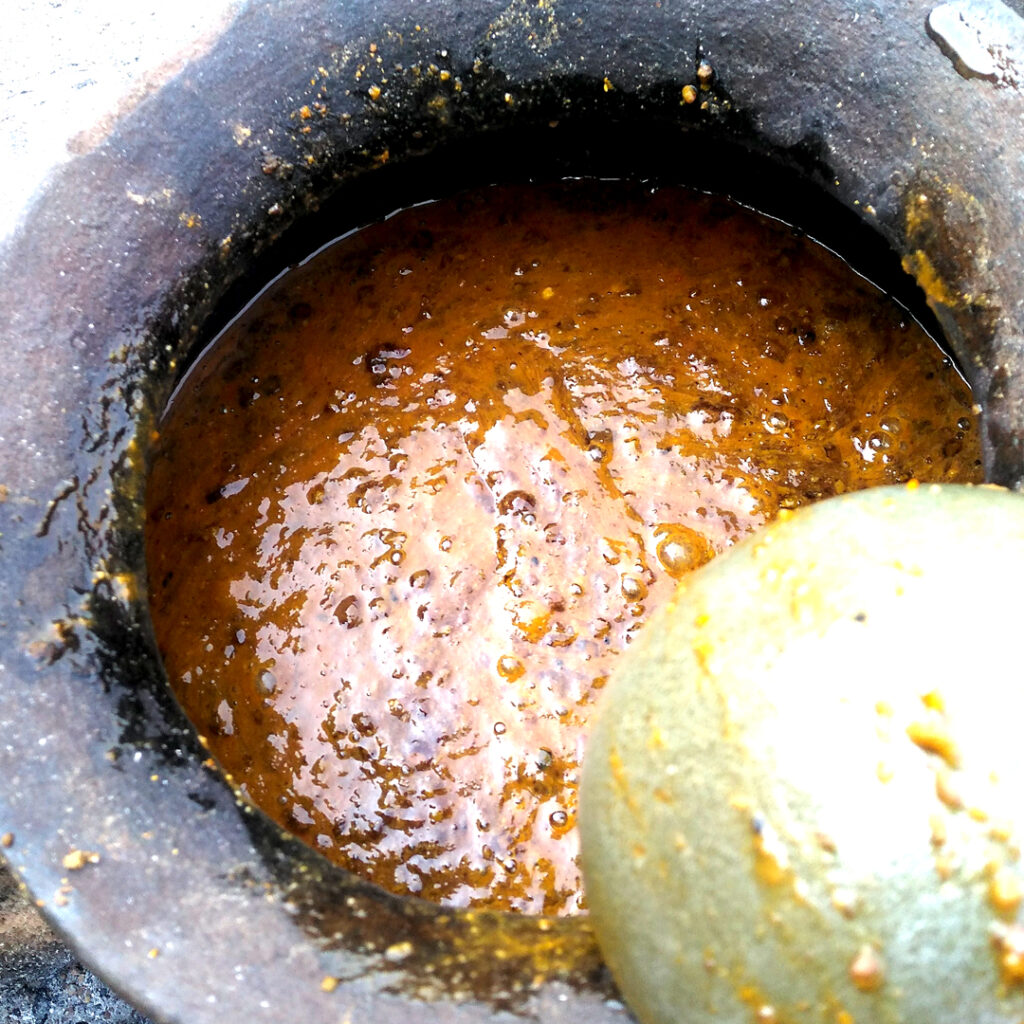
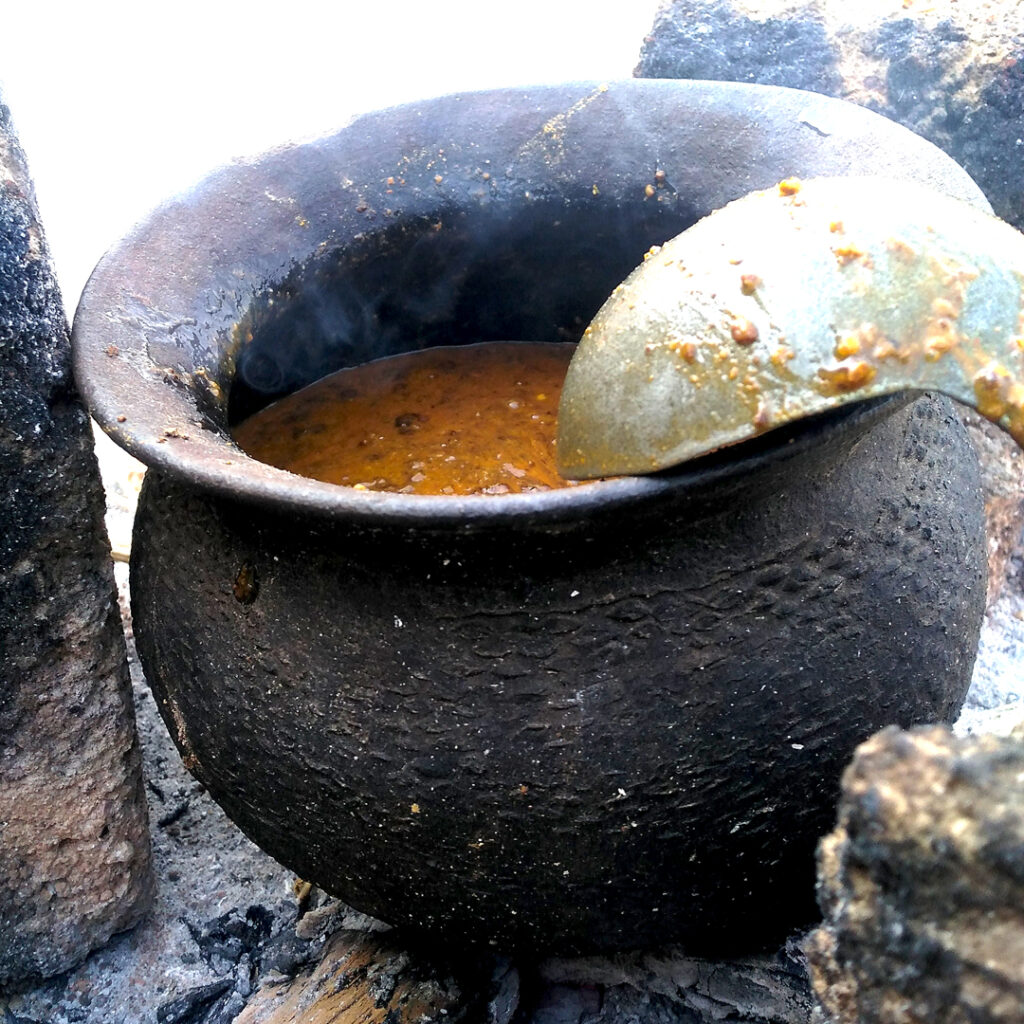
MODE OF PREPARATION
- The genger (the crisply-dry flower butt) is pounded into powder; the powder is not sieved.
- The desired quantity of the genger powder is scooped with a cooking spoon or any scooping tool and then, poured into a traditional pot. Note that, this soup is been prepared only in this traditional pot called ‘tuwa u nyaar’ in Tiv language; it is a locally made pottery pot.
- Next, water is been poured gradually into the traditional pot that contains the powder; it is then stirred with a cooking spoon as the water is added gradually. Potassium is added, though, it is optional for some people.
- After a few minutes, the mixture (genger powder and water) thickens. A small quantity of genger powder rises a great deal after water is added and it thickens more after every second.
- When the desired thickening is achieved, the genger is then cooked using firewood. It is a delicate soup that needs less heat and cooks slowly. The use of gas, stove or any other means for cooking it is highly discouraged. Even while using firewood, the fire should be very low and charcoal earned from the firewood after combustion would subsequently be sufficient.
- It is pertinent to note that, while the soup cooks gradually, it requires constant stirring while on the fire to prevent it from burning due to its thickness.
- The ingredients: nune, gbaaye, yiye, kyohÔ and mkem (any pepper can be used, but dried ngbakpa is mostly preferred) are grinded or blended properly and kept aside. Seasoning cubes of desired quantity may be crushed and added into the grinded or blended ingredients to melt.
- When the genger cooks for probably one hour or more, it becomes darker; this means, it is time to add the blended ingredients and some salt to the genger and stir.
- A few minutes after the addition of these grinded or blended ingredients, the genger is ready for consumption.
Following the above method of preparation, anyone who wishes to prepare this special delicate delicacy can successfully do so. Francois de la Rochefoucauld rightly said: “to eat is a necessity, but to eat intelligently is an art.” Thus, the genger delicacy is a healthy way of eating intelligently; one would wish to eat this a trillion times… Ready to try?

Chekwa Sir Ralph
The preparation always seem to be like a mystery… Best prepared by those grand Mums.
You made it easy!
Vie
Wow. I really love how detailed and accurate this is. Celebrating our rich culture! Well done iambenue.com
How To Start A Peanut Business – I am Benue
[…] Genger Delicacy, Its Healthy Benefits And How To Prepare It […]
Gbasha Cyprian Terhemba
This is an informative content. Thanks for this information. It helped.
Wade Lubem Mark
Just accessed this piece at the right time. I want to cook it right away.
A Little Lesson I learnt From Wrapping Moi-Moi – I am Benue
[…] Genger Delicacy, Its Healthy Benefits And How To Prepare It […]